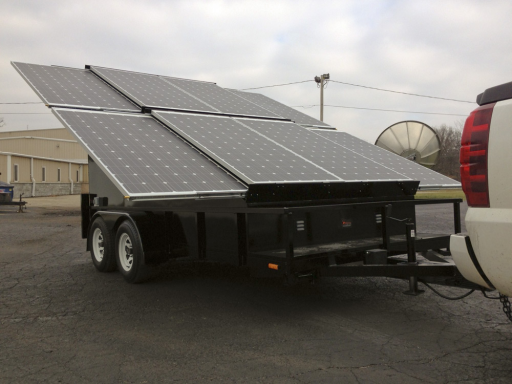That can't/won't happen, it's literally not possible within the footprint of a vehicle.
There isn't enough roof/hood/tonneau cover surface area to power an electric truck/SUV even at 100% panel efficiency. The sun's energy is about 1000w per square meter, or 92.94w per square ft. Even at 100% efficiency (typical current solar panels are in the ~20 efficiency range, FWIW) it's simply not enough. The Rivian is 217" by 79" wide. That means it has about ~120 square feet of surface area on the "top" sides of it (it's actually a good bit less since corners are rounded, the windshield takes up a significant portion even when viewed from directly overhead, etc). If every square inch of horizontal area was covered in 100% efficient solar panels (aka, about 5 times more efficient than anything we have now) you're going to collect 92.94w x 120sqft x 1hr =~ 11kWh but a Rivian R1T uses 48kWh/100 miles. Extending that, it would imply that with 100% efficient solar panels in the most direct sunlight possible for an hour you'd get ~22 miles of range. Now you might argue that ~22 MPH is a reasonable speed for off road/expedition travel. But at those speeds, off road, with aired-down tires etc. the efficiency of the R1T would drop. Let's also not forget we made some HUGE rounding errors in favor of solar.
First, and obviously most egregious we assumed 100% solar panel efficiency. Again, we're at ~20% right now. So even if we triple efficiency to 60% you're still talking less than 10 miles of range/hour. And that's only during peak sunlight hours with 100% direct sun. What if you're in the woods? Or there are clouds? What about morning/evening when the sun isn't directly above you? What if your panels get dusty or muddy on the trail? Next, you're not actually going to have 120sqft. of solar on the vehicle. Finally, we're ignoring how much less efficient slow travel on dirt trails is than rolling down a flat, paved highway.
Anyway, the point is it's not a matter of making better solar panels, even at 100% efficiency which is a complete impossibility something like a Rivian will not and CANNOT be self-sufficient. The best you could get would be something that might have an array of solar panels to deploy once parked and be able to charge itself back up over a few days of perfect conditions - and even that is far-fetched with current tech.
-TJ








